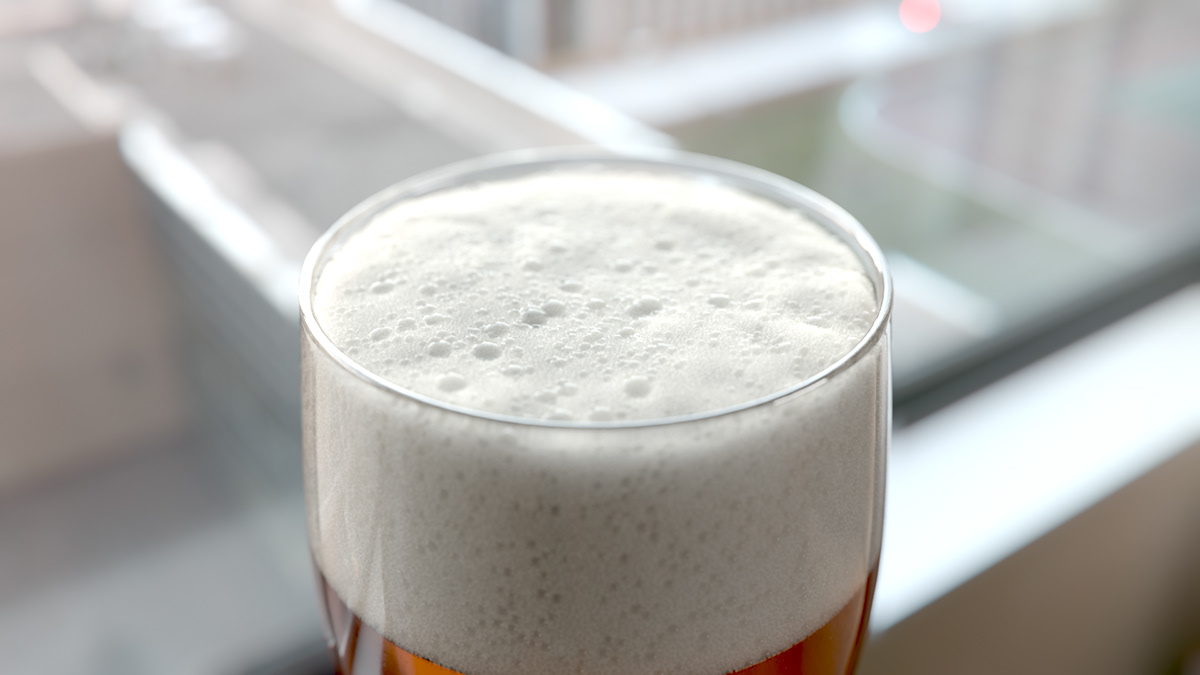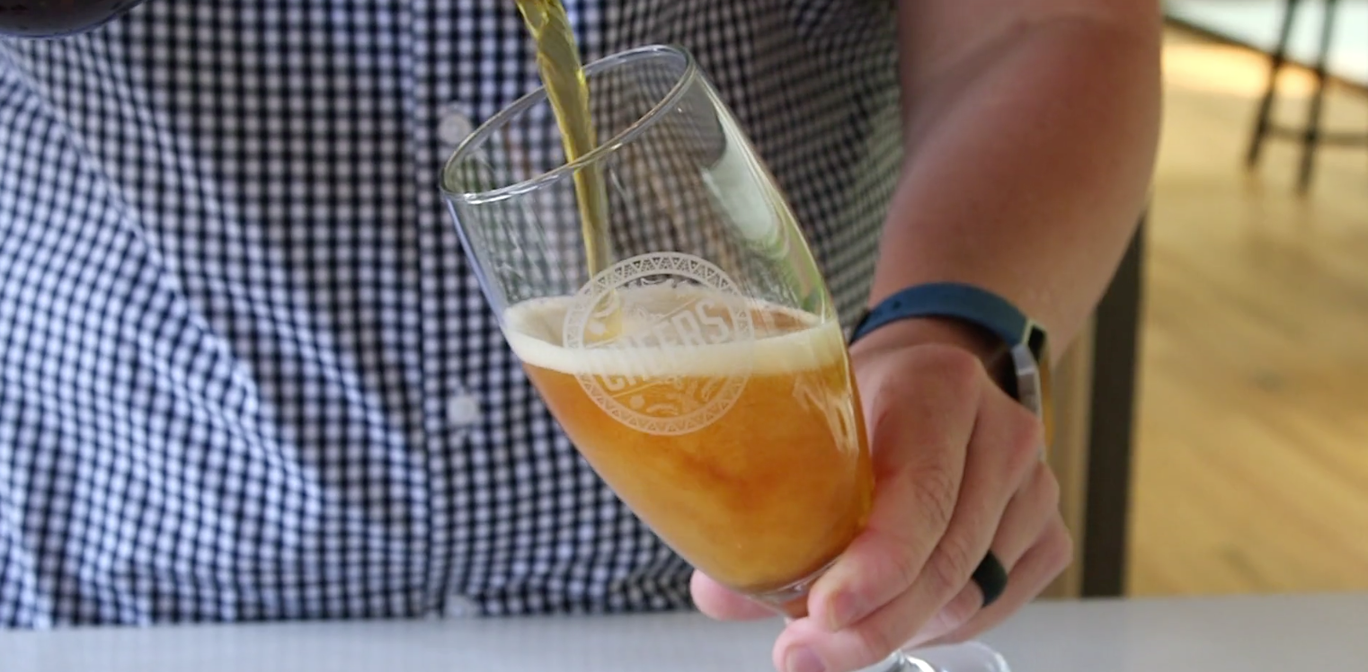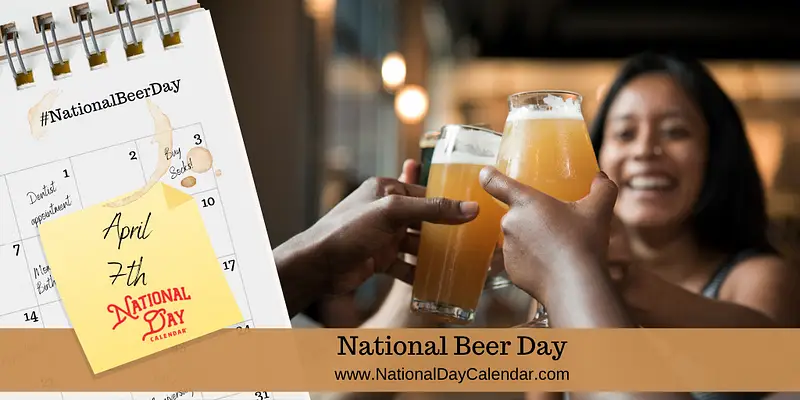Why Does Beer Foam?
 |
| Photo: Behance |
Whether you refer to it as foam, head, kräusen or the junk on top of your beer—love it or hate it—the foam that develops on top of mostcraft beers is impossible to ignore. But what is it, exactly? How can foam differ from glass to glass and beer to beer? Why is your beer foamy, but not the one served to the person sitting next to you?
Behind beer foam’s mysterious curtain there is actually a lot of science!
Foam Basics
When beer foams, it is obviously due to the creation of bubbles. This phenomenon is referred to as nucleation.
 |
| Photo: Food & Wine Magazine |
The physics of nucleation as a whole isn’t entirely understood, and there are a large group of proteins and smaller polypeptides (additional proteins) that can act as a group and individually as foam positive agents. One particular protein naturally found in barley is Lipid Transfer Protein 1 (LTP1), and it plays a large role in a beer’s foam.
LTP1 has a high rate of “hydrophobicity” (meaning it doesn’t like water), so in order to help alleviate its predicament, it grabs hold of a bubble of CO2—produced in fermentation as well as introduced in bottling/kegging—and then rises to the surface alongside the CO2 bubble (or N2, for nitrogen beers…but more on that in a bit).
Once at the surface, the LTP1 protein forms a coating on the bubbles which helps maintain the foam. Hops also come into play as the hydrophobic polypeptides derived from grain cross link with bitter iso-alpha acids from hops to render foam more ridged, stable and clingy.
There are dozens of variables that impact the differences in head-foam quality, texture and retention, but quantities of LTP1 in a specific batch of beer can be traced back to factors like how wet or warm the climate was that produced the barley.
Foam’s Effect on Flavor
A beer often tastes different when it’s topped with head of foam, and this is due to surface active compounds that move into the bubble walls as they percolate to the top of your glass. Foam also carries a profound trigeminal sensation—that is, “taste” effects which are actually perceived physically. Think of the “cool” sensation of mint, or the “hot” sensation of chili peppers. Neither is delivering an actual thermal load, but rather they cause a physical perception. The creamy, fluffy feel of foam can dramatically alter the perception of any given beer by “softening” the overall palate.
It’s also important to remember that our senses of taste and smell are intimately interwoven. In fact, many times a specific characteristic that a drinker may describe as ‘taste’ is actually detected in their nasal passage. Foam brings more odor compounds to the surface of your beer, kind of like un-stuffing your nose and opening up the full range of flavors.
What is Lacing?
 |
| Photo: Eater |
The LTP1 proteins mentioned earlier, which form a coating around every foam bubble, interact with other compounds that also happen to rise to the top of your glass.
Once these proteins and compounds begin to interact with one another, they become denser, undergoing a textural transition, and begin to stick to the sides of the glass when left alone for a bit. This is why a beer consumed slowly will accumulate much more lacing than its guzzled counterpart.
Why tilting a beer glass to avoid foam actually makes you bloated
 |
| (Business Insider) The correct way to pour beer is by tilting the glass and pouring with vigour |
If you’ve ever tried your hand at bartending only to realise you are unable to pour a beer without forming a head of foam - you are in luck.
A beer sommelier has revealed to Business Insider the proper way to pour a beer - and it turns out that a head of foam is actually a good thing when enjoying a nice cold one.
According to Max Bakker, the first and only Master Cicerone in New York - a certification which means he has an exceptional understanding of all things beer related - without that collar of foam, a beer is not a beer at all.
And beer bloat is actually the result of pouring a beer incorrectly - or pouring a beer with minimal foam.
According to Max, carbon dioxide that has not been released into a glass when pouring a beer, which is what happens when you pour beer into a tilted glass slowly, has a disastrous effect when it settles in your stomach.
This slow-pour means the CO2 has nowhere to go - which leads to bloating when the liquid is disturbed in your stomach and the remaining carbon dioxide is released - especially once you add food to the mixture.
The solution? Pouring a beer down the side of a glass with vigour.
This method of pouring a beer ensures that the CO2 is broken out into the glass - meaning the bloating that occurs when drinking a beer that was not poured properly doesn’t happen.
So before you try to send back a beer for having too much foam, remember that the foam is actually protecting you from feeling full and uncomfortable.
The foam always turns into beer anyway, according to Max.
And the foam is where “you will taste the sweetness of the malt and the bitterness of the hops” as well as protect the integrity of the beer aroma.
*******READ MORE: National Beer Day - Why, When & How to Celebrate - Bizarre Holidays
Why Does My Beer Have More Foam?There are a myriad of answers to this question, but here are a few common (and interesting!) variables to think about: “Beer clean” glassware: Detergent or other cleaning agents that may be invisibly residing in a glass can decrease the formation of foam. Your glass should be thoroughly rinsed before being filled. Etched glassware: Some glassware is etched on the bottom to create an additional nucleation site. Bubbles cling to the etching and accumulate until they’re buoyant enough to break free and rise to the top of your beer, replenishing the head. Lipstick or chapstick: Certain waxes and compounds in lipstick and chapstick can block protein interactions and/or poke holes in the bubbles’ protective protein skins, killing beer foam. Greasy or fatty foods: Much like lipstick, fats from foods that are on your lips can pose a real detriment to your foam’s stability and overall length of life. Alcohol content: The alcohol (ethanol) in beer actually acts as a foam deterrent. After one percent ABV, ethanol’s ability to deter foam progressively increases with the alcohol content. Temperature: Temperature not only affects your perception of taste, but also your beer’s overall attractiveness. The process of “disproportionation” is when smaller bubbles become absorbed by larger ones to create a spotty, bladdery effect. This happens at higher temperatures, creating poorer foam in the glass, as well as more overall foam in kegs. Nitrogen: Nitrogen has the unique and wonderful ability to produce a creamy, “rich” mouthfeel and a thick head which produces a wonderfully drinkable and enticing experience. I mentioned disproportionation above and its relationship to temperature, but it also has to do with the solubility of a gas through liquid. Nitrogen gas is not very soluble, so it produces many small bubbles that create a very creamy, stable head. This also explains that wonderful, cascading “reverse waterfall” effect as the bubbles rise. Learn more in “Good Beer Gas: Nitro Beers Explained” by John Holl. |
 Top 10 Rose Wine to Drink in 2021/2022 Top 10 Rose Wine to Drink in 2021/2022 Pretty in pink, rosé wine is an exciting and diverse category. Check out the list of 10 must-try suggestions for rose wine of 2021 below! |
 The 11 Best White Wines To Drink In 2021/2022 The 11 Best White Wines To Drink In 2021/2022 Wine is an integral part of human history, and it’s hard to refuse a drink, especially if it’s a glass of bubbly and refreshing white ... |
 The Best Red Wines To Drink In 2021/2022 The Best Red Wines To Drink In 2021/2022 There's so much red wine choice on the shelves nowadays it's easy to get overwhelmed by the options. Here in KnowInsiders, we have gathered the ... |
 National Beer Day In USA: Why It Is Celebrated, List of All Beer Drinking National Beer Day In USA: Why It Is Celebrated, List of All Beer Drinking Get your wallet, grab a glass and call your friends to gather around the local pubs, or stay at home with a six pack! National ... |























